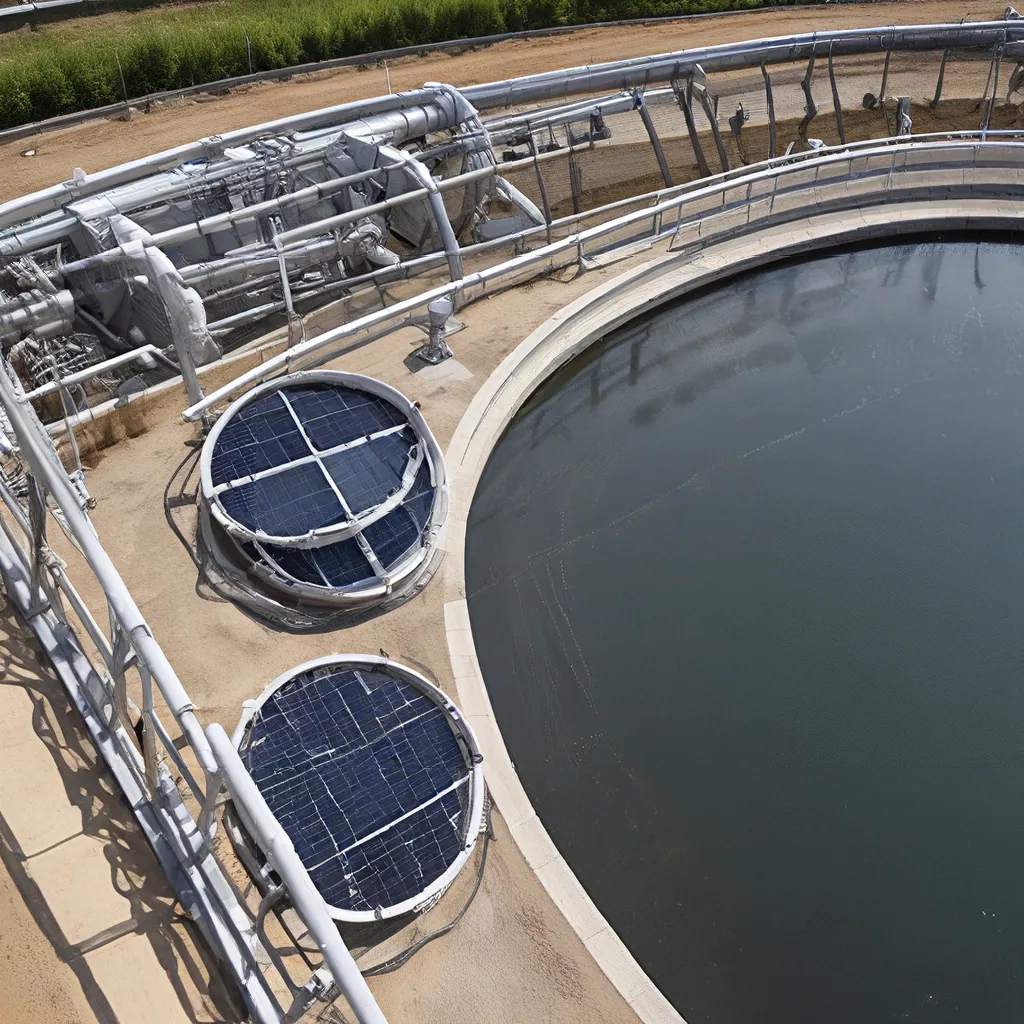
The Renewable Energy Landscape: Trends and Challenges
As the world grapples with the urgent need to reduce our carbon footprint and combat climate change, the spotlight has turned to the vast potential of renewable energy sources. From the relentless power of the wind and sun to the ancient heat of the Earth’s core, these natural forces hold the key to a sustainable energy future.
I’ve been fascinated by the renewable energy revolution for years. The sheer scale and diversity of these technologies is truly awe-inspiring. As I delve deeper into the topic, I can’t help but wonder: how can we harness these renewable marvels to tackle one of the most critical yet often overlooked sectors – wastewater treatment?
Wastewater Treatment: The Untapped Renewable Energy Frontier
Wastewater treatment plants (WWTPs) are the unsung heroes of our modern infrastructure, quietly ensuring that the water we use is cleaned and returned to the environment in a safe and responsible manner. Yet, these facilities are also energy-intensive behemoths, consuming vast amounts of electricity to power their complex operations.
What if we could turn these energy-hungry plants into renewable energy powerhouses? The idea of wastewater treatment plants becoming energy neutral or even energy positive has captured the imagination of engineers, environmentalists, and policymakers alike. But how feasible is this vision, and what innovative strategies are being employed to make it a reality?
Harnessing the Power of Biomass and Biogas
One of the most promising renewable energy sources for wastewater treatment plants is the biomass and biogas generated as a byproduct of the treatment process. The organic matter present in wastewater can be harnessed to produce methane-rich biogas, which can then be used to fuel combined heat and power (CHP) systems or even be upgraded and injected into the natural gas grid.
I recently visited a WWTP that has taken this concept to the next level. This facility has implemented an advanced anaerobic digestion system that not only generates biogas for on-site electricity and heat production, but also produces a nutrient-rich digestate that can be used as a sustainable fertilizer. By closing the loop on their waste streams, they have transformed their plant into a true circular economy powerhouse.
But the benefits of biogas don’t stop there. Some WWTPs are even experimenting with the integration of microbial fuel cells, which can directly convert the chemical energy in wastewater into electricity, bypassing the need for energy-intensive aeration processes. These innovative technologies hold immense promise for dramatically reducing the energy demands of wastewater treatment.
Harnessing the Sun and the Wind
While biogas and biomass offer exciting opportunities, the vast untapped potential of solar and wind power is also coming into focus for wastewater treatment facilities. Across the globe, WWTPs are installing solar photovoltaic (PV) systems and wind turbines to harness these abundant renewable resources.
I was recently impressed by a WWTP in the Southwestern United States that has embraced this approach. By covering their expansive treatment lagoons with floating solar arrays, they are not only generating clean electricity, but also reducing evaporative losses and algal growth – a win-win for both energy production and water treatment efficiency.
But the integration of renewables isn’t without its challenges. The intermittent nature of wind and solar power can create grid stability issues, requiring innovative solutions like energy storage systems and smart grid technologies to ensure a reliable and balanced supply. Wastewater treatment plants are at the forefront of exploring these cutting-edge approaches.
Tapping into Geothermal and Hydropower
Beyond the more well-known renewable sources, some WWTPs are also exploring the potential of geothermal energy and small-scale hydropower. By harnessing the stable, year-round temperatures of the Earth’s subsurface, geothermal systems can provide efficient heating and cooling for wastewater treatment facilities. And in areas with suitable water resources, micro-hydropower turbines can be integrated into the treatment plant’s water distribution system to generate electricity.
I recently toured a WWTP in the Pacific Northwest that has embraced both geothermal and hydropower technologies. By tapping into the region’s abundant water resources and stable geothermal gradients, they have created a truly diversified renewable energy portfolio that supports their ambitious goal of achieving net-zero energy consumption.
Overcoming Barriers and Embracing the Future
While the potential for renewable energy integration in wastewater treatment plants is immense, there are still significant technological, financial, and regulatory hurdles that must be overcome. Issues like grid interconnection, energy storage, and policy incentives can all play a crucial role in the successful implementation of these renewable strategies.
But I’m encouraged by the resilience and innovation I’ve witnessed in this industry. Wastewater treatment professionals are collaborating with renewable energy experts, researchers, and policymakers to tackle these challenges head-on. From innovative wastewater treatment technologies to cutting-edge energy management systems, the future of this sector is brimming with possibilities.
As I reflect on my journey exploring the renewable energy revolution in wastewater treatment, I can’t help but feel a sense of excitement and optimism. These facilities are poised to become beacons of sustainability, demonstrating to the world that true energy neutrality and beyond is not only possible, but necessary. With continued innovation, collaboration, and a steadfast commitment to a greener future, I believe the day is not far when wastewater treatment plants will proudly stand as renewable energy powerhouses, leading the charge towards a more sustainable tomorrow.